𝐑𝐮𝐬𝐬𝐢𝐚 𝐚𝐧𝐝 𝐔𝐤𝐫𝐚𝐢𝐧𝐞-𝐓𝐡𝐞 𝐑𝐞𝐥𝐢𝐠𝐢𝐨𝐮𝐬 𝐃𝐢𝐦𝐞𝐧𝐬𝐢𝐨𝐧: 𝐖𝐡𝐲 𝐢𝐬 𝐏𝐮𝐭𝐢𝐧 𝐥𝐨𝐨𝐤𝐢𝐧𝐠 𝐟𝐨𝐫𝐰𝐚𝐫𝐝 𝐭𝐨 𝐜𝐞𝐥𝐞𝐛𝐫𝐚𝐭𝐢𝐧𝐠 𝐄𝐚𝐬𝐭𝐞𝐫 𝐢𝐧 𝐊𝐢𝐞𝐯?
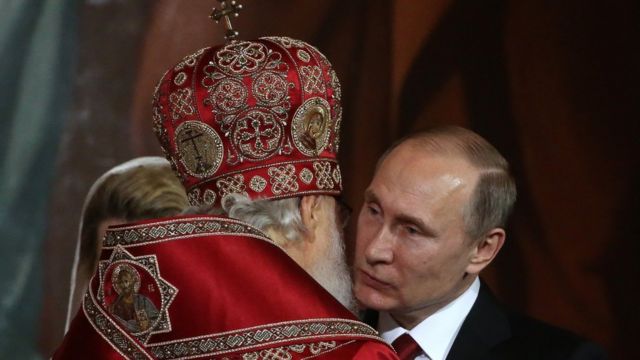
Ukraine’s efforts to join NATO were the stated direct reason for the Russian military campaign against Kiev. While some analysts point to reasons related to Putin’s ambition to revive the legacy of the Soviet Union, whose collapse in 1991 the Russian president said was a “disintegration of historical Russia”, others believe that there are other underlying reasons for the invasion, including Vladimir Putin’s desire to celebrate Easter in Kiev .
Some historians believe that the religious factor played a role in the decision to invade, which is the view of the prominent American historian Diana Butler Bass, who specializes in the history of Christianity.
Butler Bass says in an article she published a few days ago that the Russian invasion of Ukraine that we are witnessing today is nothing but a new chapter in an old tale, whose “happy” ending, according to Putin, will be the celebration of Easter mass in Kiev.
That story began with the fall of the Roman Empire, and the subsequent competition for its political and religious legacy among the empires it left throughout history.
According to the historian, for Orthodox Christians, Kiev is considered Jerusalem, so the struggle “over Ukraine is also a struggle over any orthodoxy that will mark the face of Eastern Europe.”
For her, the military operation announced by the Russians was no less important, from their point of view, than “a crusade to restore the Holy Orthodox lands from Western heretics.”
The first baptism of the Russians
The reason for this is due to the great symbolism of the city of Kiev in the history of Orthodox Christianity, as it played a founding role, and is the first place of the doctrine in the Russian collective consciousness.
In an article published on the “Unheard” website, British journalist and pastor Jill Frazier compares today’s Vladimir Putin with Vladimir I, Prince of Kiev between 978 and 1015, called Vladimir the Great.
Historical accounts differ about the story of Vladimir I, Prince of Kievan Russia, converting to Christianity after he was a pagan. However, it is mentioned in a number of references that he had requested the hand of Princess Anna, the sister of the Byzantine Emperor Basil II, to build a political alliance, and the emperor’s condition was that Vladimir convert to Christianity.
Vladimir helped the emperor suppress rebels and, in celebration of his victory, not only converted to Christianity, but made it the religion of his people.
Narratives say that on his way back to Kiev, Vladimir broke idols, and led a mass baptism on the Dnieper River in 988 (the river originates in Russia, crosses Belarus, and Ukraine).
Given the significance of this founding moment in Russian history, Frazier sees Putin aspiring to reclaim Kiev, “the mother city of Russian Orthodoxy,” as a reminder of the glories of Vladimir the Great.
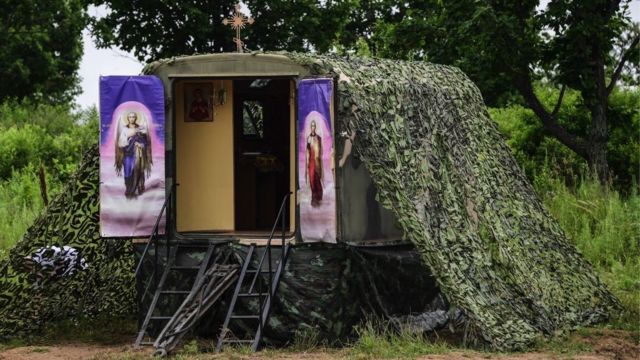
Ukrainian Church Independence
In this context, some believe that one of the factors that paved the way for the current Russian invasion was the separation of the Ukrainian Church from the Russian Church in 2018, as it had been part of it since 1686.
When declaring the secession years ago, former Ukrainian President Petro Poroshenko described it as “a victory for the faithful people of Ukraine over the demons of Moscow”. Putin blamed Ukrainian politicians for “interfering in church affairs” and stressed his country’s right to protect “freedom of worship.”
The independence of the Ukrainian Church led to a wider split at the level of the Orthodox churches, with the Russian Church announcing its separation from the Orthodox family, in protest against the role of Bartholomew I, the Ecumenical Patriarch of Constantinople, in issuing the decree recognizing the new church.
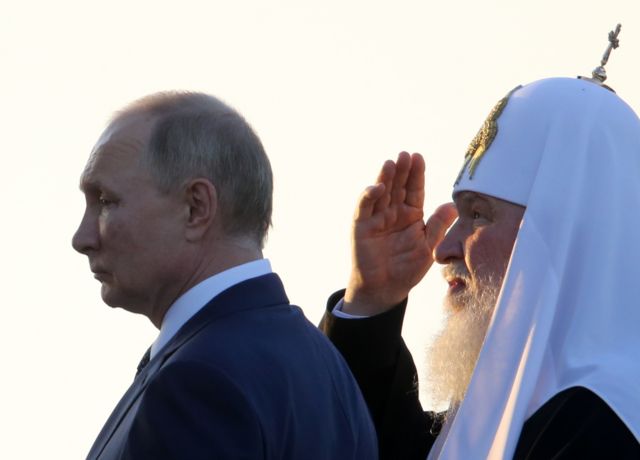
As is known, Bartholomew I, based in Turkey, has no authority over the rest of the Orthodox Churches. It is true that these churches belong to one body, but their management and leadership are independent of each other. Bartholomew is no more than advanced among equals, as the Orthodox and the Eastern Churches do not have the same administrative hierarchical structure as the Catholic Church.
Writer Michael Khodarkovsky says in the “New York Times”, that the announcement of the Ukrainian Church’s separation from the Russian Church, constituted “a serious blow to the ambitions of Putin and the Russian Church on several levels, as Orthodox Ukrainians represent 30 percent of all Christians belonging to the Moscow Patriarch. Secession means the loss of millions of followers.” Millions of dollars in church property.
Orthodox pride
During the Putin years, the role of the church grew significantly. In a research book entitled “The Mighty and All-Powerful” issued by the Theos Research Center in 2017, researcher Ben Ryan says that the relationship between the Russian president and the Orthodox Church is an “extraordinarily dynamic, symbiotic relationship.”
Under his rule, Putin allowed the Church to regain its primacy and gave it support as no Russian ruler had done since the Bolshevik Revolution. For its part, the Church provided the president with intellectual and cultural support to provide the basis for his statist vision, and to expand Russia’s sphere of influence around the world.
According to a study conducted by the American Pew Research Center, Orthodox Christianity has witnessed a major renaissance in Eastern Europe during the past two decades, both in Russia and in the surrounding countries, where 70 percent of the population identify themselves as Orthodox.
According to the center, this renaissance coincided with the growth of pro-Russian sentiment in the region, “as a necessary force to balance the influence of the West”, “because the Orthodox identity is closely linked to national identity, and to feelings of pride and cultural superiority.”
Khodarkovsky writes that the links between the Kremlin and the Moscow Patriarchate are as old as Russia itself. “Throughout its history, the Russian Orthodox Church has been subordinate to the state, and supportive of government.
Since the sixteenth century, the Church has strengthened rulers with a political theology based on the idea of ”manifested destiny or manifest destiny”, which asserts that Moscow has become the second Jerusalem and the third Rome (after Rome and Constantinople). “.
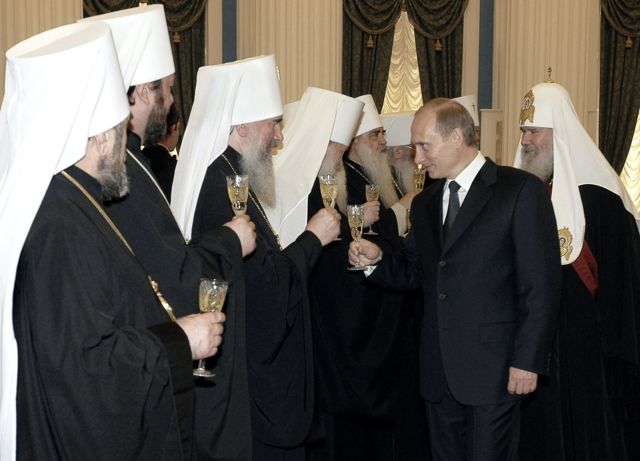
During the years of Soviet rule, the role of the Church declined to rise after decades of erosion during the 1990s. Since Putin came to power, he has relied on the church as the unifying force in the country, cementing his position as the protector of the Russians.
According to Ryan, Russia has not seen since the time of the Czars a leader like Putin, who “shows the need and desire to use the church in a useful way to support his domestic and foreign policies”, even during the era of Boris Yeltsin, when the Russian state wanted to atone for the sins of the Soviet era, which completely suppressed religious practices.
The researcher believes that the church has become a symbol of Putin’s power, and to indicate their organic relationship, he recalls the protest movement carried out by the “Pussy Riot” singing group inside the Moscow Cathedral. “It is difficult to think of another secular European leader, against whom the most symbolic objection would be directed from within a church,” he says.
Cross necklace
According to the website of the US Heritage Foundation, Putin is positioning himself as a defender of conservative traditions and the status of the Church, through public rhetoric rejecting divorce, homosexuality, and encouraging traditional family values.
Observers believe that Putin, regardless of his personal religious convictions, wants to employ those traditional Christian values for political influence.
Others, however, believe that it is more than a functional tool, as Putin is keen to display a pious side in his public image, although he is very secretive about his upbringing and private life.
For example, Putin has a cross necklace, which does not leave his neck, and it is said that it was a gift from his mother on the day he was secretly baptized in the early fifties.
Another story about the necklace is that Putin blessed it on the tomb of Christ, during a visit he made to Israel while working as an officer in the Russian intelligence in the 1990s. It is also said that the cross was one of the few objects that survived a fire that destroyed his family’s home.
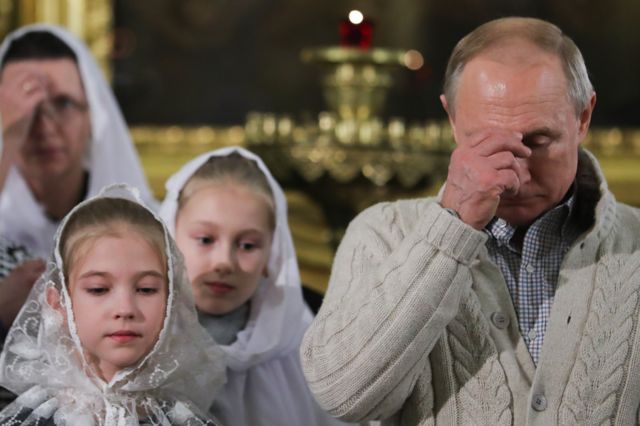
All these details about the cross, seem to be selected to give it a mythical dimension, and to establish the image of Putin as a faithful figure.
In addition, Putin has a strong relationship with Archimandrite Tikhon Shevkunov, abbot of the Strinsky Monastery, and is believed to be one of the most prominent people familiar with Putin’s biography, as he was for years the confessor of the Russian president.
Tikhon took over the project for the permanent interactive exhibition “Russia, My History”, which opened in Saint Petersburg in 2016.
Spreading over a vast area, the exhibition chronicles the history of Russia over a thousand years and celebrates the heroism of Russian greats. In the same context, Tikhon played a role in renaming Russia’s airports after Russian military heroes and scientists.
Holy Russian Civilization
This is one of the main indicators of Putin’s desire to make the Orthodox Church a spearhead in his project to advance Russian nationalism, and a powerful tool to support his political ideology about Russia, which is destined to be a great power.
Therefore, Putin made great efforts to support the church financially, morally and politically, starting with restoring church holdings that were sold during the communist era, building thousands of cathedrals, in addition to including an article on Orthodox culture in the school curricula.
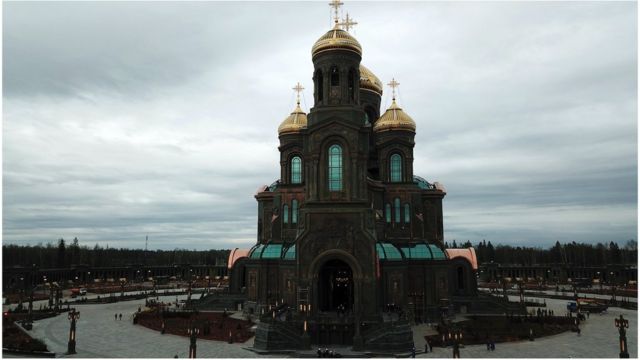
In addition, the church plays an important role in the Russian army. During the recent operations in Ukraine, recordings of mobile churches accompanying Russian military units were seen. The priest sometimes blesses weapons on the battlefields and performs prayers with soldiers.
To signify the close relationship between the church and the army, the Russian Armed Forces built their own cathedral in Moscow, which opened in 2020, to celebrate the 75th anniversary of Russia’s victory in World War II, and to celebrate the military exploits of the Russian people in the wars they fought.
For his part, the Moscow Patriarch Kirill of the Kremlin and the Russian army reciprocates the same feelings of pride. In one of his speeches, he talks about the church’s role in ensuring the unity of spiritual peoples in the states located on the territory of “historic Russia”, and its importance in protecting the system of “Orthodox values that the sacred Russian civilization carries to the world.” .
Research and Translation: Mohamad Mostafa Nassar